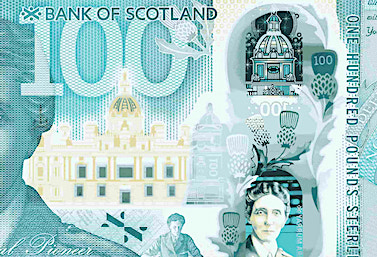The Scottish Government estimated on Thursday that its current resource spending requirements could exceed funding by £1 billion in the next financial year, and by £1.9 billion in 2027-28, “due to inflation, pay increases and the lack of further funding from the UK Government.”
It said the gap between capital spending commitments and funding could rise to 16% in 2025-26.
Meanwhile the The Scottish Fiscal Commission said it now forecasts that the Scottish economy will remain largely flat this year rather than “fall into the shallow recession predicted in December.”
Deputy First Minister Shona Robison unveiled the Scottish Government’s “Medium-Term Financial Strategy” saying its details show the “tough choices required in challenging financial circumstances.”
Robison said: “Our funding remains largely based on decisions made by the UK Government, but they have failed to take the steps required to inflation-proof our budgets, and their decisions from Brexit to the disastrous mini-budget have made matters worse.
“This is creating substantial pressure on our public services, which we have no choice but to address.
“Today I have outlined our strategy for managing these challenges, doing all we can within our powers to ensure public finances are on a sustainable path.
“We will have a laser-like focus on spending, ensuring it targets equality, opportunity and community. We will generate economic growth, supporting businesses to invest and create new jobs while increasing tax revenues to invest in better public services.
“And we will continue to build the most progressive tax system in the UK, ensuring the burden of taxation is placed on those with the broadest shoulders.
“There can be no escaping the difficult choices ahead, but by following the plan outlined today we can provide a more prosperous and fairer future for the people of Scotland.”
The Scottish Fiscal Commission said in a statement that the five-year funding outlook for the Scottish Government has “remained broadly unchanged since its forecasts in December last year.”
The Commission said it now forecasts that the Scottish economy will remain largely flat this year rather than “fall into the shallow recession predicted in December.”
The commission said that despite this marginal improvement in the forecast for GDP and low levels of unemployment this year, living standards are once again likely to fall in 2023-24.
“This is because the overall rate of inflation, which now reflects a broader range of price rises than just energy, will continue to exceed the growth in nominal household disposable incomes,” said the Commission.
It said forecast revenue from Scottish income tax has been revised up, because of higher employment and nominal earnings.
“By 2027-28 the forecast revenue increases by £209 million,” said the Commission.
“However, the offsetting adjustment to the Block Grant to the Scottish Government also rises following similar revisions by the OBR to their income tax forecast for the rest of the UK.
“The result is a small upwards movement in the net funding available to the Scottish Government.
“The Commission has also revised up its forecasts of social security spending mainly because demand for disability benefits has been higher than expected.
“By 2027-28 the forecast spend increases by £122 million.
“The Scottish Government’s resource funding is expected to increase modestly in real terms throughout the five-year forecast horizon.
“However, the resource position will be particularly tight in 2024-25 where real funding will be only marginally above this year.
“Finally, capital funding is more constrained and projected to fall in both nominal and real terms over the next five years.”
The Commission’s chair, Professor Graeme Roy, said: “In December we cautioned that pressures from rising costs would mean that the funding position for individual government portfolios would be challenging.
“That assessment remains unchanged despite our marginally more optimistic forecasts.”
